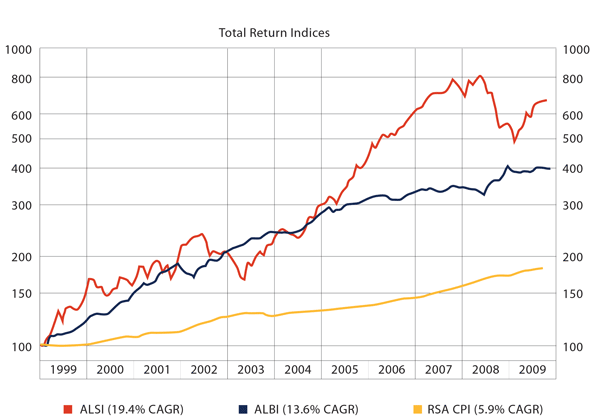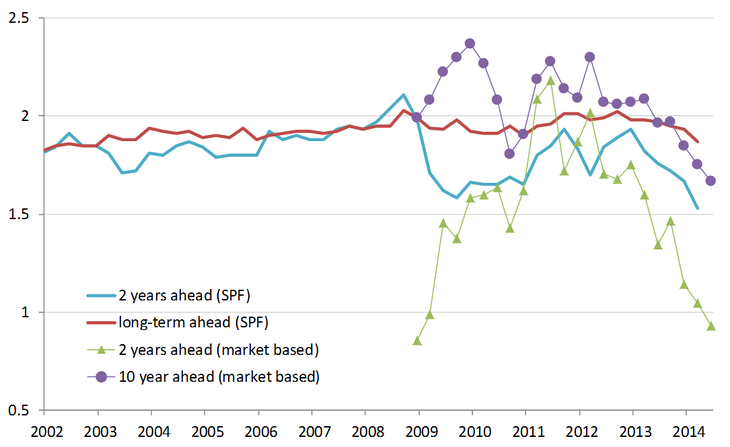LongTerm Investing Remember Inflation
Post on: 13 Июнь, 2015 No Comment

In this article
- The value of the Consumer Price Index (CPI) How the value of your investments erodes Stocks can outpace Diversify!
A penny saved is a penny earned, right? Not necessarily. Thanks to inflation, over time that penny could be worth less than when it was first dropped into the piggy bank. That’s why if you’re investing — especially for major goals years away, such as retirement — you can’t afford to ignore the corrosive effect rising prices can have on the value of your assets.
Watch For A Rising Cost-Price Index
Just what is inflation, this ravenous beast that eats away at the value of every dollar you earn? It is essentially the increase in the price of any goods or services. The most commonly referenced measure of that increase is the Consumer Price Index (CPI), which is based on a monthly survey by the U.S. Bureau of Labor Statistics. The CPI compares current and past prices of a sample market basket of goods from a variety of categories including housing, food, transportation, and apparel.
The CPI does have shortcomings, according to economists — it does not take taxes into account or consider that as the price of one product rises, consumers may react by purchasing a cheaper substitute (name brand vs. generic, for example). Nonetheless, it is widely considered a useful way to measure prices over time.
Inflation has been a very consistent fact of life in the U.S. economy. Dating back to 1945, the purchasing power of the dollar has declined in value every year but two — 1949 and 1950. Still, inflation rates were generally considered moderate until the 1970s. The average annual rate from 1900 to 1970 was approximately 2.5%. From 1970, however, the average rate spiked to around 6%, hitting a high of 13.3% in 1979.* Following the high inflation of the late ’70s and early ’80s, rates have been closer to the 2% to 4% range; the inflation rate in 2012 was 1.74%.*
*Source: U.S. Bureau of Labor Statistics.
Inflation Can Erode Your Investments
In today’s economy, it’s easy to overlook inflation when preparing for your financial future. An inflation rate of 4% might not seem to be worth a second thought — until you consider its effect on the purchasing power of your money over the long term.
In just 20 years, 4% inflation annually would drive the value of a dollar down to $0.44. If the price of a $1,000 refrigerator rises by 4% over 20 years, it will more than double to $2,200, given the same inflation rate and time period. Under the same conditions, the price of an automobile that costs $23,000 today would soar to more than $50,000.
Inflation also works against your investments. When you calculate the return on an investment, you’ll need to consider not just the interest rate you receive but also the real rate of return, which is determined by figuring in the effects of inflation.Your financial professional can help you calculate your real rate of return.
Clearly, if you plan to achieve long-term financial goals, such as college savings for your children or your own retirement, you’ll need to create a portfolio of investments that will seek to provide sufficient returns after factoring in the rate of inflation.
Over Time, Stocks Have Historically Outpaced Inflation
Protecting your portfolio against the potential threat of inflation might begin with a review of the investments most likely to provide returns that outpace inflation.
Over the long run — 10, 20, 30 years, or more — stocks may provide the best potential for returns that exceed inflation. While past performance is no guarantee of future results, stocks have historically provided higher returns than other asset classes. Keep in mind that these findings take into consideration lengthy periods of time.
Consider these findings from a study of Standard & Poor’s data, keeping in mind that it is not possible to invest directly in an index.
Between 1926 and December 31, 2012, the annualized return for a portfolio composed exclusively of stocks in Standard & Poor’s Composite Index of 500 Stocks was 9.90% — well above the average inflation rate of 2.98% for the same period.**
The average annual return for investment-grade government bonds, on the other hand, was only 5.27%. The stock portfolio did not suffer a loss in 805 separate 20-year holding periods. In every period, the annualized rate of return for the stock portfolio was greater than the inflation rate. At the same time, the bond portfolio outpaced inflation in only 437 of the 805 20-year holding periods — by a much lower margin.
Diversification As An Inflation Fighter

There are many ways to include stocks in your long-term plan in whatever proportion you decide is appropriate. Your financial professional can help you develop a diversified portfolio of shares from companies you select.
Another option is a stock mutual fund, which offers the benefit of professional management. Stock mutual funds have demonstrated similar long-term growth potential as individual stocks. You might also consider IRAs and variable annuities, which allow you to select from a variety of investment portfolios, including growth-oriented portfolios. As you approach retirement, you can also shift assets within a variable annuity to a more conservative portfolio if appropriate.
This chart tracks inflation versus the annual returns of the S&P 500 and investment-grade bonds.** Large-cap stocks are represented by the total annual returns of the S&P 500. I nvestment-grade bonds are represented by a composite of the total annual returns of long-term Treasuries (10+ year maturities), the Barclays Long-Term Government Bond index, and the Barclays U.S. Aggregate index. Inflation is represented by the annual change in the Consumer Price Index.
**Sources: Standard & Poor’s; Barclays Capital; Bureau of Economic Analysis. Large-Cap stocks are represented by the total annual returns of the S&P 500. Investment-grade bonds are represented by a composite of the total annual returns of long-term Treasuries (10+ year maturities), the Barclays Long-Term Government Bond index, and the Barclays U.S. Aggregate index. Inflation is represented by the annual change in the Consumer Price Index. You cannot invest in any index.
Your Time Horizon Also Affects Your Asset Allocation
Keep in mind that stocks do involve greater risk of short-term fluctuations than other asset classes. Unlike a bond, which guarantees a fixed return if you hold it until maturity, a stock can rise or fall in value based on daily events in the stock market, trends in the economy, or problems at the issuing company. But if you have a long investment time frame and are willing to hold your ground during short-term ups and downs, you may find that stocks offer the best chance to beat inflation.
The key is to consider your time frame, your anticipated income needs, and how much volatility you are willing to accept, and then construct a portfolio with the mix of stocks and other investments with which you are comfortable. For instance, if you have just embarked on your career and have 30 or 40 years until you plan to retire, a mix of 70% stocks and 30% bonds might be suitable.** * But even if you are approaching retirement, you may still need to maintain some growth-oriented investments as a hedge against inflation. After all, your retirement assets may need to last for 30 years or more, and inflation will continue to work against you throughout.
** * These allocations are presented only as examples and are not intended as investment advice. Please consult a qualified financial professional; if you have questions about these examples and how they may relate to your own financial situation. The investor profile is hypothetical.
Take Steps To Tame Inflation’s Bite
Whatever your investor profile — from first-time investor to experienced retiree — you need to keep inflation in your sights. Stocks may be your best weapon, and there are many ways to include them. Consult your financial professional to discuss your specific needs and options.
Points To Remember
- When investing for long-term goals, you should consider the effects of inflation on your investment returns.
- Inflation is the rising price of goods and services.
- Diversifying your portfolio with stocks and stock mutual funds may offer the best chance of beating inflation over the long term.
- Remember to consider your time frame and risk tolerance when considering investments for your portfolio.














